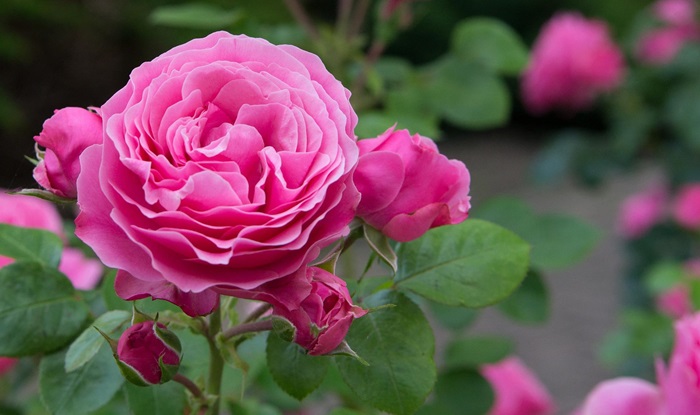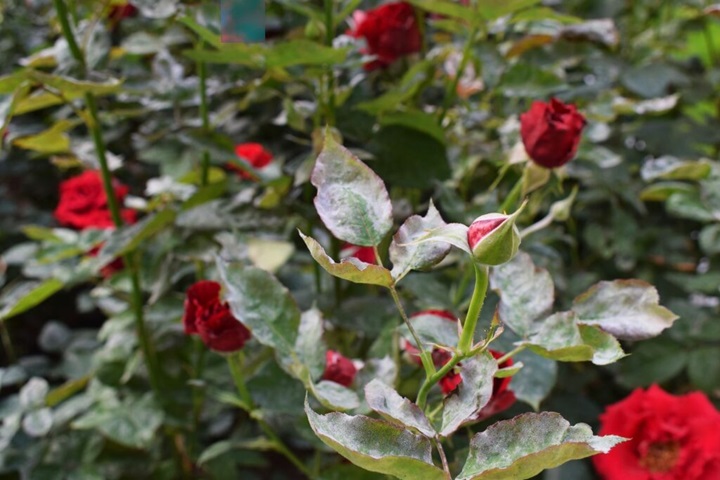Roses are prized for their beauty, fragrance, and versatility in gardens worldwide. However, even the most experienced gardeners can encounter challenges in maintaining healthy rose bushes. One common issue that arises is overwatering, which can lead to various diseases that affect the health and aesthetics of roses. In this comprehensive guide, we’ll delve into the signs, symptoms, prevention, and treatment of overwatered rose diseases, accompanied by helpful pictures for easy identification.
Understanding Overwatering and Its Effects on Roses

Before delving into specific diseases, it’s crucial to understand the impact of overwatering on rose plants. While water is essential for plant growth, excessive moisture in the soil can lead to oxygen deprivation in the root zone, making roses vulnerable to fungal infections and other diseases. Overwatering can also weaken the plant’s overall health, making it more susceptible to pests and environmental stressors.
Identifying Overwatered Rose Diseases
- Powdery Mildew
- Description: Powdery mildew is a fungal disease characterized by a white, powdery growth on the leaves, stems, and buds of roses.
- Symptoms:
- White powdery spots on foliage
- Distorted or stunted growth
- Premature leaf drop
- Prevention and Treatment:
- Improve air circulation around plants
- Avoid overhead watering
- Apply fungicidal treatments as needed
- Black Spot
- Description: Black spot is a common fungal disease that causes dark, circular lesions on rose leaves, eventually leading to defoliation if left untreated.
- Symptoms:
- Black or dark brown spots on leaves
- Yellowing of infected foliage
- Leaf drop
- Prevention and Treatment:
- Remove infected leaves promptly
- Apply fungicidal sprays preventively
- Mulch to prevent soil splashing
- Root Rot
- Description: Root rot occurs when the roots of rose plants become waterlogged, leading to decay and eventual death of the root system.
- Symptoms:
- Wilting or drooping foliage
- Yellowing leaves
- Stunted growth
- Prevention and Treatment:
- Ensure well-draining soil
- Avoid overwatering
- Prune affected roots and replant in fresh soil if necessary
Preventing Overwatered Rose Diseases
- Proper Watering Practices
- Water deeply but infrequently to encourage deep root growth.
- Use a soaker hose or drip irrigation to deliver water directly to the root zone.
- Water in the morning to allow foliage to dry before evening, reducing the risk of fungal diseases.
- Improving Soil Drainage
- Amend heavy clay soils with organic matter to improve drainage.
- Plant roses in raised beds or mounds to promote drainage.
- Avoid planting roses in low-lying areas prone to water accumulation.
- Practicing Good Sanitation
- Remove fallen leaves and debris from around rose bushes to prevent disease spread.
- Disinfect pruning tools between cuts to avoid transmitting pathogens.
- Rotate plantings to prevent the buildup of soil-borne diseases.
Treatment of Overwatered Rose Diseases
- Fungicidal Treatments
- Apply fungicides according to label instructions at the first sign of disease.
- Choose fungicides labeled for the specific disease affecting your roses.
- Repeat applications as necessary, especially during periods of high humidity.
- Pruning and Removal of Infected Plant Parts
- Prune out diseased foliage and stems using clean, sharp pruning shears.
- Dispose of infected plant material in the trash or burn it to prevent disease spread.
- Avoid composting diseased plant material, as fungal spores can survive composting.
- Improving Growing Conditions
- Address underlying issues such as poor drainage or overcrowding to promote plant health.
- Provide adequate sunlight and air circulation to reduce humidity around rose bushes.
- Monitor watering practices closely and adjust as needed based on weather conditions.
Overwatering is a common pitfall for rose enthusiasts, but with proper care and attention, the risk of overwatered rose diseases can be minimized. By understanding the signs, symptoms, prevention, and treatment of common fungal infections such as powdery mildew, black spot, and root rot, gardeners can safeguard their rose bushes and enjoy vibrant, healthy blooms throughout the growing season. Remember to maintain good watering practices, improve soil drainage, and promptly address any signs of disease to keep your roses thriving for years to come.


